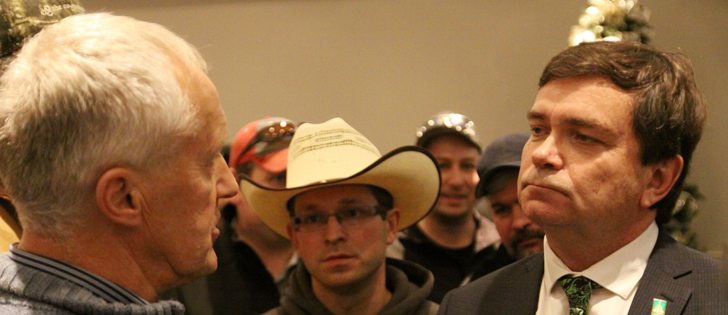The fourth round of renegotiations has been a rough ride for the North American Free Trade Agreement.
The United States used its home turf advantage in Arlington, Virginia, to table several proposals that have sparked rebuttals from Canadian and Mexican officials.
Included in the proposals: a five-year sunset clause, a 50 percent U.S. content rule for autos and the gutting of current NAFTA dispute resolution mechanisms (historically seen as a ‘deal-breaker’ for Canada).
Canada walked of out the original Canada-U.S. Free Trade Agreements in 1987 over dispute resolution. The current Canadian government has hinted it is prepared to do the same.
Read Also

Proactive approach best bet with looming catastrophes
The Pan-Canadian Action Plan on African swine fever has been developed to avoid the worst case scenario — a total loss ofmarket access.
The Americans have also come out hard on the agriculture front.
U.S. negotiators pitched another problematic proposal Oct. 13: the elimination of a controversial Canadian milk class, called Class 7, that is despised by the U.S. dairy industry, which says it impedes American dairy exports to Canada.
The new milk class was rolled out in March as one piece of the yet-to-be finalized National Ingredient Strategy being negotiated between Canada’s dairy producers and processors. It prices milk ingredients like protein concentrates, skim milk powder and whole mike powder.
Canadian officials have argued the new milk class is an industry decision that deals with prices. It does not impede American dairy trade.
Canada’s Agriculture Minister Lawrence MacAulay called the U.S. dairy proposal a “non-starter” Oct. 16, telling reporters during a media callback from Rome the federal government will continue to defend Canada’s supply management system.
American actions at the NAFTA negotiations have many people talking about whether the trilateral trade agreement will survive.
One has to wonder if the NAFTA deal is another file where U.S. President Donald Trump’s personal feelings have been underestimated.
Trump made it clear during the presidential campaign how much he despises the trade pact. He repeatedly called it the “worst trade deal” the United States had ever signed.
Despite this, few in North America seemed to think he would blow the trade deal up. It’s NAFTA, after all, they said, the poster child for free trade agreements.
While Trump’s NAFTA stance has ranged from mere “tweaking” of the deal to full on withdrawal, his repeated commitment to the so-called rust belt workers and manufacturers has been consistent.
No one seems to know what a NAFTA victory for Trump would look like. No one knows what Washington intends to do.
An American withdrawal from NAFTA is becoming more possible. The risk is real: the NAFTA plug could be pulled at any time — regardless of what stage the negotiations are at.
However, Trump would likely require Congress to at least unwind some of the complex regulations surrounding NAFTA and relations between the president, house representatives and senators has been strained. It is a legal grey area as to whether Trump requires congressional approval to pull out of the deal.
Canada and Mexico cannot be seen as the ones to pull the plug on the ongoing NAFTA renegotiation. A walk out by either country would be seen as a Trump victory, regardless of how toxic the negotiating environment becomes. Doing so would likely guarantee the end of NAFTA.
Canada and Mexico cannot let the Trump administration get under their skin. Doing so would make them the scape goat for the failed deal.
If NAFTA is going to be blown out of the water, it must be the U.S. administration that does so and it then must respond to American industries that depend heavily on the agreement.
On Oct. 16, parliament secretary Andrew Leslie said Ottawa has no plan to walk away from the talks, and said he remains optimistic the three countries will make it through all seven scheduled trade rounds.
















